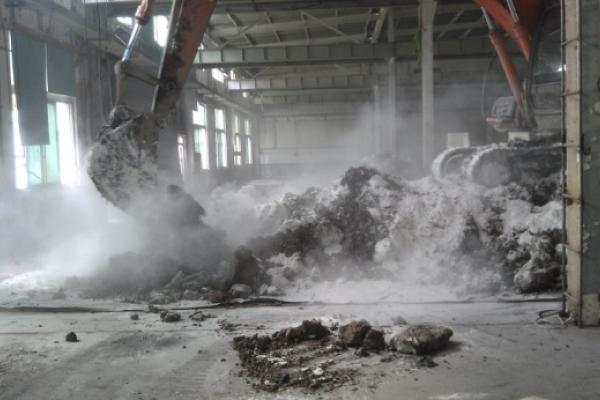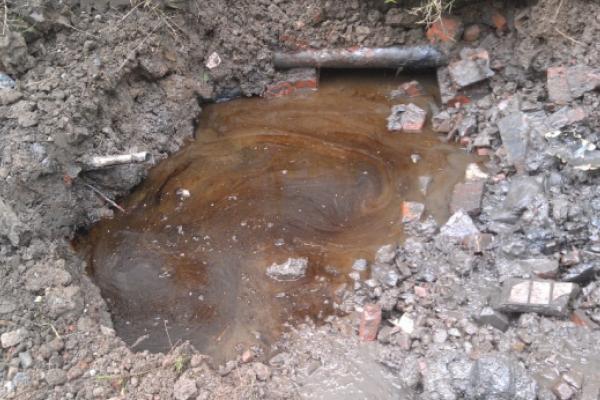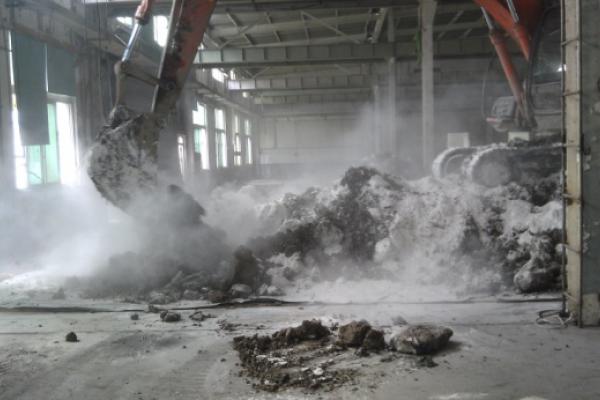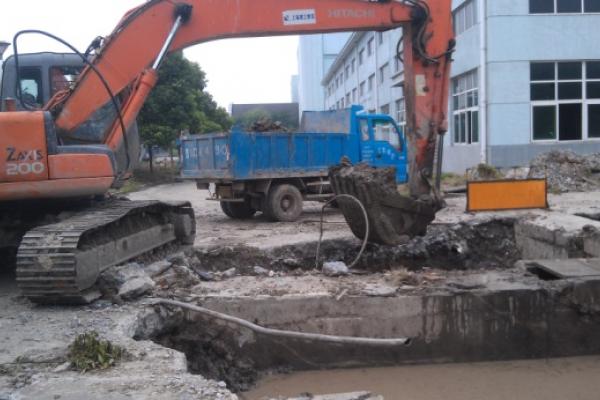

Magnesium alloy products and aluminum alloy pressure casting products were historically manufactured at the site. The factory was relocated in 2013.
Greenment conducted a preliminary investigation in December 2013 and a detailed investigation in January 2014 to evaluate the nature and extent of contamination in soil and groundwater at the site and surrounding areas. The results were used to determine potential sources of contamination from current and historical operations at the site.
The preliminary investigation mainly included document collection, site reconnaissance, personnel interviews, preliminary sampling and analysis. Eight deep boreholes, seven shallow boreholes and eight monitoring wells were installed. The laboratory analysis results indicated that soil and groundwater in some parts of the site were contaminated by organic contaminants.
Detailed investigation was conducted based on the preliminary investigation results. Samples were selectively collected in areas not covered by the preliminary investigation. Supplemental samples were also collected in areas where contaminant concentrations were higher than assessment standards during preliminary investigation. A total of 22 deep boreholes, 14 shallow boreholes and 22 monitoring wells were installed to determine the level and extent of soil and groundwater contamination at the site.
The samples were sent to laboratories with CMA and CNAS accreditations for chemical analysis.
To ensure continuous protection of human health in subsequent land use, Greenment was entrusted to conduct a human health risk assessment in May 2014.
Ø Assessment protocols: “Technical Guidelines for Risk Assessment of Contaminated Sites”(HJ25.3-2014)and “Technical Guidelines for Risk Assessment of Contaminated Sites in Shanghai(trial)”;
Ø Assessment procedure:hazards identification, exposure assessment, toxicity assessment, risk characterization and calculation of risk control values;
Ø Assessment software:RBCA Tool Kits from GSI in US;
Ø Target level of carcinogenic risk for a single contaminant:10-6;
Ø Target level of non-carcinogenic hazards for a single pollutant: 1.
The planned land use type at the site was mixed residential and commercial land. Based on the investigation results, 51 potential contaminants of concern in soil and 53 potential contaminants of concern in groundwater were selected for further evaluation in the risk assessment. Based on the results of the risk assessment, contaminants of concern in soil included tetrachloroethylene, dichloromethane, ethylbenzene, 1,2,4-Trimethyl benzene, TPH, Phthalate (Di(2-ethylhexyl)) esters and benzo (a) pyrene, and contaminants of concern in groundwater included benzene , benzo (a) pyrene 1,2-benzanthracene, 1,2,4-Trimethyl benzene, TPH, Ethyl benzene and tetrachloroethylene. The volume of soil that needs to be treated was estimated to be approximately 620m3 and 420m3 in the areas that will be developed for residential and commercial purposes respectively. The area of groundwater that needs to be cleaned up was approximately 2520m2 and 2000m2, respectively. The depth of contamination varied from 4 to 5 meters across the site.
Ex-situ chemical oxidation was used to treat the contaminated soil. The contaminated soil was first excavated and transferred to a temporary storage area, where it was screened and crushed by professional equipment. The physical and chemical properties of the soil, such as humidity and pH, were adjusted before oxidation agent was mechanically mixed with the soil. After a period of 3 to 5 days to ensure a complete reaction between the contaminants and the oxidation agent, confirmation samples were collected for chemical analysis. Twenty tonnes of oxidation agents were used for the 1,000m3 of contaminated soil. The monitoring results indicated that the concentrations of all the target contaminants had met the treatment goals, with detailed data shown below:
| Target Contaminant | Maximum Concentration before Treatment(mg/kg) | Target Cleanup Level(mg/kg) | Maximum Concentration after Treatment(mg/kg) |
| TPH | 2737 | 1512 | 843 |
| Ethylbenzene | 12.8 | 2.77 | 0.021 |
| 1,2,4-trimethyl benzene | 32.1 | 27.2 | <0.005 |
| Benzene a-pyrene | 0.43 | 0.36 | <0.2 |
Multi-phase extraction combined with in-situ chemical oxidation was used to treat the groundwater contamination. First, multi-phase extraction was conducted to enhance the recovery of light non-aqueous phase fluids (LNAPLs) and groundwater with high concentrations of contaminants. In addition, the concentrations of contaminants in soil and groundwater were further reduced by vacuum extraction of soil gas and groundwater. When the concentrations of contaminants in groundwater could not be further reduced significantly by extraction to the cleanup goal, in-situ chemical oxidation was used to directly inject oxidation agent into the contaminated zone to further treat the dissolved contaminants in groundwater. The monitoring results indicated that the cleanup goal for all target contaminants in groundwater had been met, with detailed data shown below:
| Target Contaminant | Concentration before Treatment(μg/L) | Target Cleanup Level(μg/L) | Concentration after Treatment(μg/L) |
| TPH | 5179~130386 | 2110 | 210~290 |
| Ethylbenzene | 70.6~459 | 43 | <5 |
| 1,2,4-Trimethyl benzene | 238~816 | 51 | <5 |




